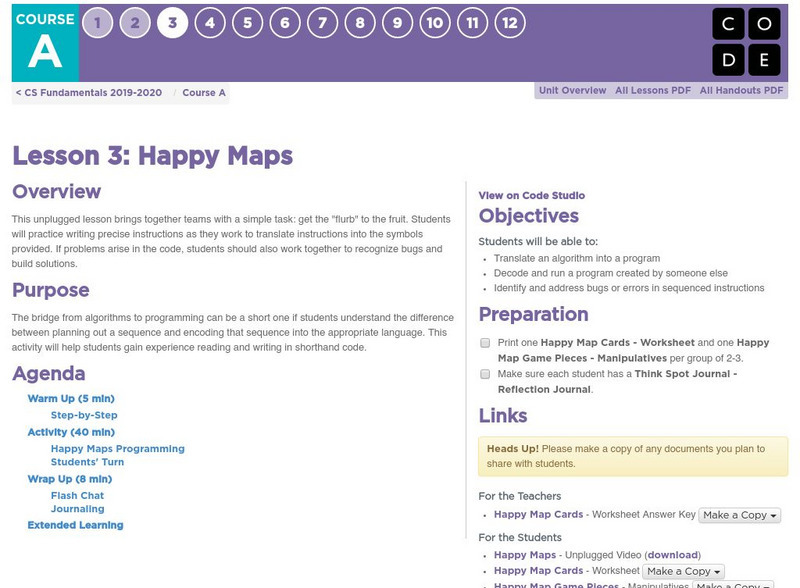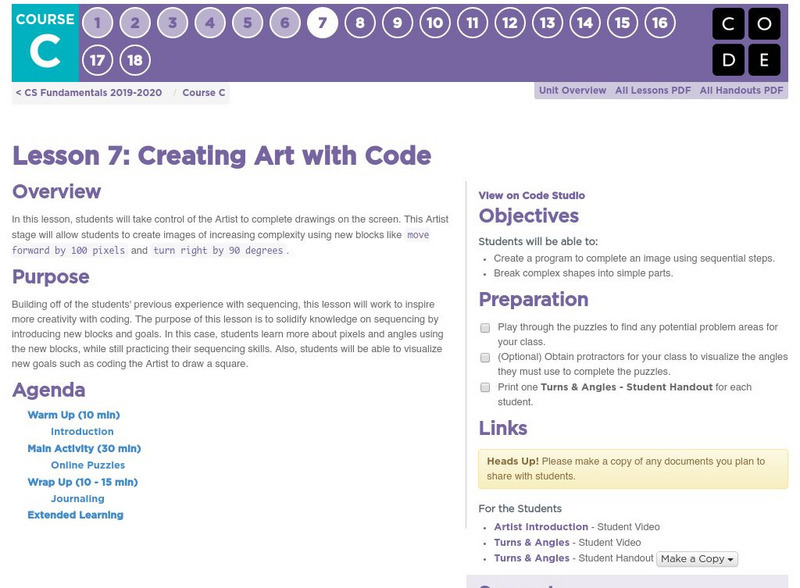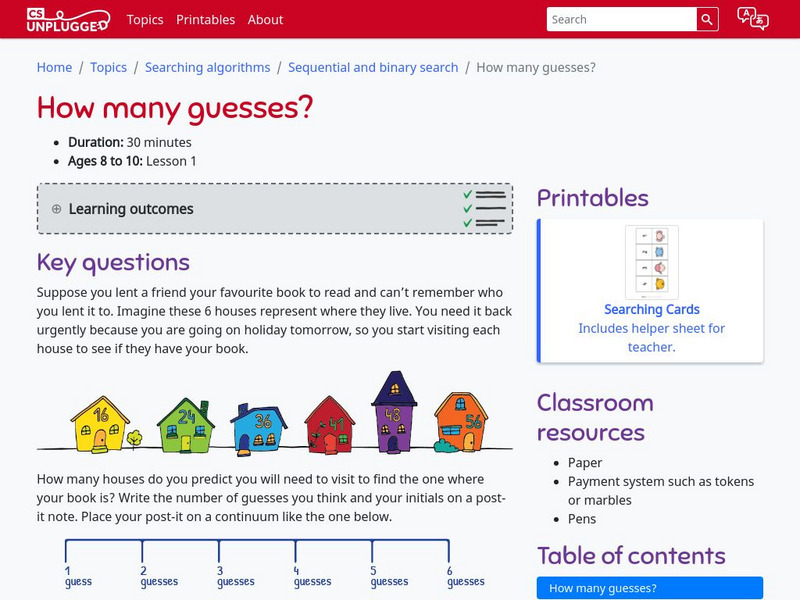Cold Spring Harbor Laboratory
Dna From the Beginning: Some Dna Can Jump
This article contains information on how DNA is repaired to prevent mutated damage from interrupting DNA processes.
Rice University
Rice University: Let's Count!
Let's Count is a website that offers opportunities to count lots of different sets of things. You can also view the same website in Spanish.
Khan Academy
Khan Academy: Count in Order
Practice counting without making mistakes. Students receive immediate feedback and have the opportunity to try questions repeatedly, watch a video or receive hints.
Illustrative Mathematics
Illustrative Mathematics: Rainbow Number Line
The teacher will prepare number lines for the students to trace. These number lines can be taped to the desk to be used for number recognition, sequencing, counting, "number forward", and "number backward" activities. An example is...
Illustrative Mathematics
Illustrative Mathematics: Five by Two
This card game reinforces number identification and sequencing and is conducive to small groups/centers. The young scholars will need a deck of playing cards including some of the face cards. Instructions and variations for play are...
Other
Sas: Exploring Ways Authors Use Text Structures to Convey Meaning
In this lesson, young scholars will explore ways authors use text structures to convey meaning through cause and effect, sequencing, comparison, and more.
Florida Center for Reading Research
Florida Center for Reading Research: Nar Text Structure: Story Sequence Organizer [Pdf]
A lesson plan in which learners read a narrative text and complete graphic organizers to sequence the story and finally create an illustrated storyboard. Materials are included.
Florida Center for Reading Research
Florida Center for Reading Research: Narrative Text Structure: Sequence a Story [Pdf]
A lesson plan in which students read a narrative text and write the main events of the story on sentence strips. Materials are included.
Starfall
Starfall: Garden Shop
Interactive games identifying letter sounds using picture cues. Sequencing and word families are emphasized. Other links include audio books and short videos.
Teachers.net
Teachers.net: Flip Books and Story Boards
While this lesson plan is designed to aid in communications technology, the concept and procedure of the lesson plan can be readily used in any class. The main concept taught is organization and developing chronological order.
Code.org
Code.org: Cs Fundamentals: Happy Maps
The bridge from algorithms to programming can be a short one if students understand the difference between planning out a sequence and encoding that sequence into the appropriate language. This activity will help students gain experience...
Code.org
Code.org: Cs Fundamentals: Creating Art With Code
Solidify students' knowledge on sequencing by introducing new blocks and goals. In this case, students learn more about pixels and angles using the new blocks, while still practicing their sequencing skills. Also, students will be able...
Code.org
Code.org: Cs Fundamentals: Debugging a Maze
Students in your class might become frustrated with this lesson because of the essence of debugging. Debugging is a concept that is very important to computer programming. Computer scientists have to get really good at facing the bugs in...
Code.org
Code.org: Cs Fundamentals: Lesson 10: Loops With Rey and Bb 8
Building on the concept of repeating instructions from "Getting Loopy," this stage will have students using loops to help BB-8 traverse a maze more efficiently than before.
Code.org
Code.org: Cs Fundamentals: My Loopy Robotic Friends
A reintroduction to loops, using the set of "robot" programming instructions. Students will develop critical thinking skills by looking for patterns of repetition in the movements of classmates and determining how to simplify those...
Code.org
Code.org: Cs Fundamentals: Course C
Create programs with sequencing, loops, and events. Translate your initials into binary, investigate different problem-solving techniques, and learn how to respond to cyberbullying. At the end of the course, create your very own game or...
Code.org
Code.org: Cs Fundamentals: Course D
Students develop their understanding of loops, conditionals, and events. Beyond coding, students learn about digital citizenship.
University of Canterbury
Cs Unplugged: How Many Guesses?
Use sequential and binary search strategies to figure out who has your favorite book.
Alabama Learning Exchange
Alex: Identifying Sequence of Events Using Dr. Seuss
After listening to a reading of Dr. Seuss' Bartholomew and the Oobleck, students use graphic organizers and comic strips to practice sequencing. In a fun activity, small groups follow directions to make oobleck.
Alabama Learning Exchange
Alex: How Silk Is Made
This lesson focuses on sequencing using a narrative passage and Makes Sense Guided Reading Strategies.
Alabama Learning Exchange
Alex: What Is the Pulgar?
This is a lesson for students in grades 4-6 to learn visualization, prediction, and sequencing.
Alabama Learning Exchange
Alex: Get Yourself in Order!
A lesson that requires students to act out a sequence of events in the form of improvisation. Students learn to improvise and identify the sequence of events in a dramatization.
Alabama Learning Exchange
Alex: Funny Sequence
After a discussion and work on sequence, students will apply this knowledge to sequencing comic strips through group work.
Code.org
Code.org: Cs Fundamentals: Course B
Learn the basics of computer science and internet safety. At the end of the course, create your very own game or story you can share.






![Florida Center for Reading Research: Nar Text Structure: Story Sequence Organizer [Pdf] Lesson Plan Florida Center for Reading Research: Nar Text Structure: Story Sequence Organizer [Pdf] Lesson Plan](https://content.lessonplanet.com/knovation/original/509122-4a1d30204bfd0328e9a581c70bcc9c07.jpg?1661786939)
![Florida Center for Reading Research: Narrative Text Structure: Sequence a Story [Pdf] Lesson Plan Florida Center for Reading Research: Narrative Text Structure: Sequence a Story [Pdf] Lesson Plan](https://content.lessonplanet.com/knovation/original/509124-8f3f3c440d6b6d200b605de1c46e8d0a.jpg?1661786936)














